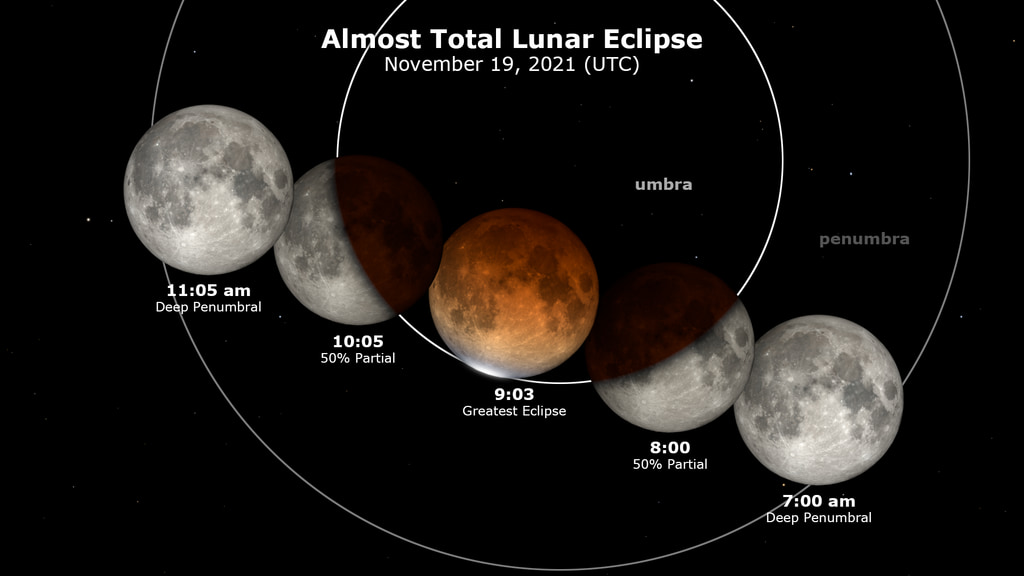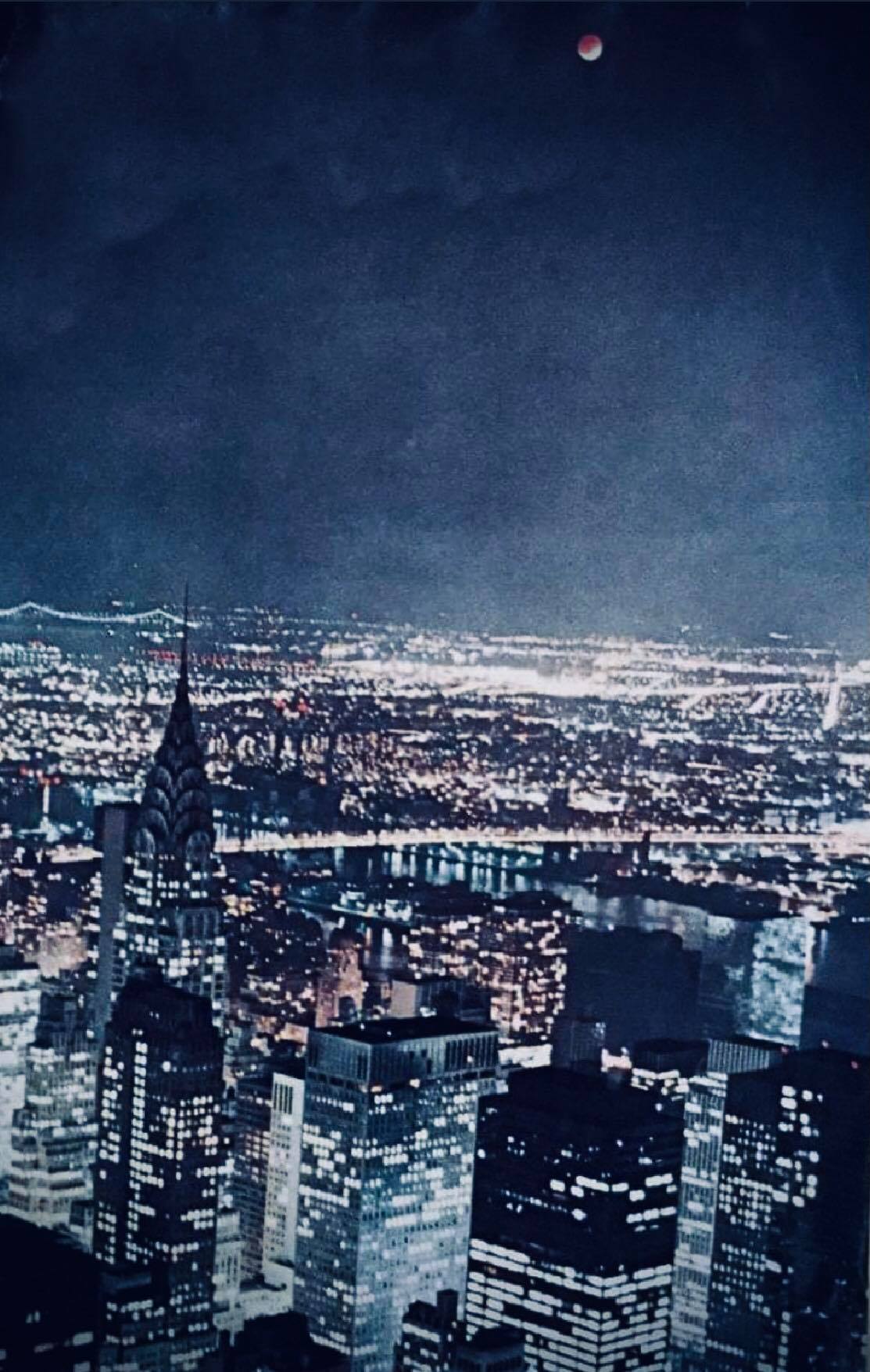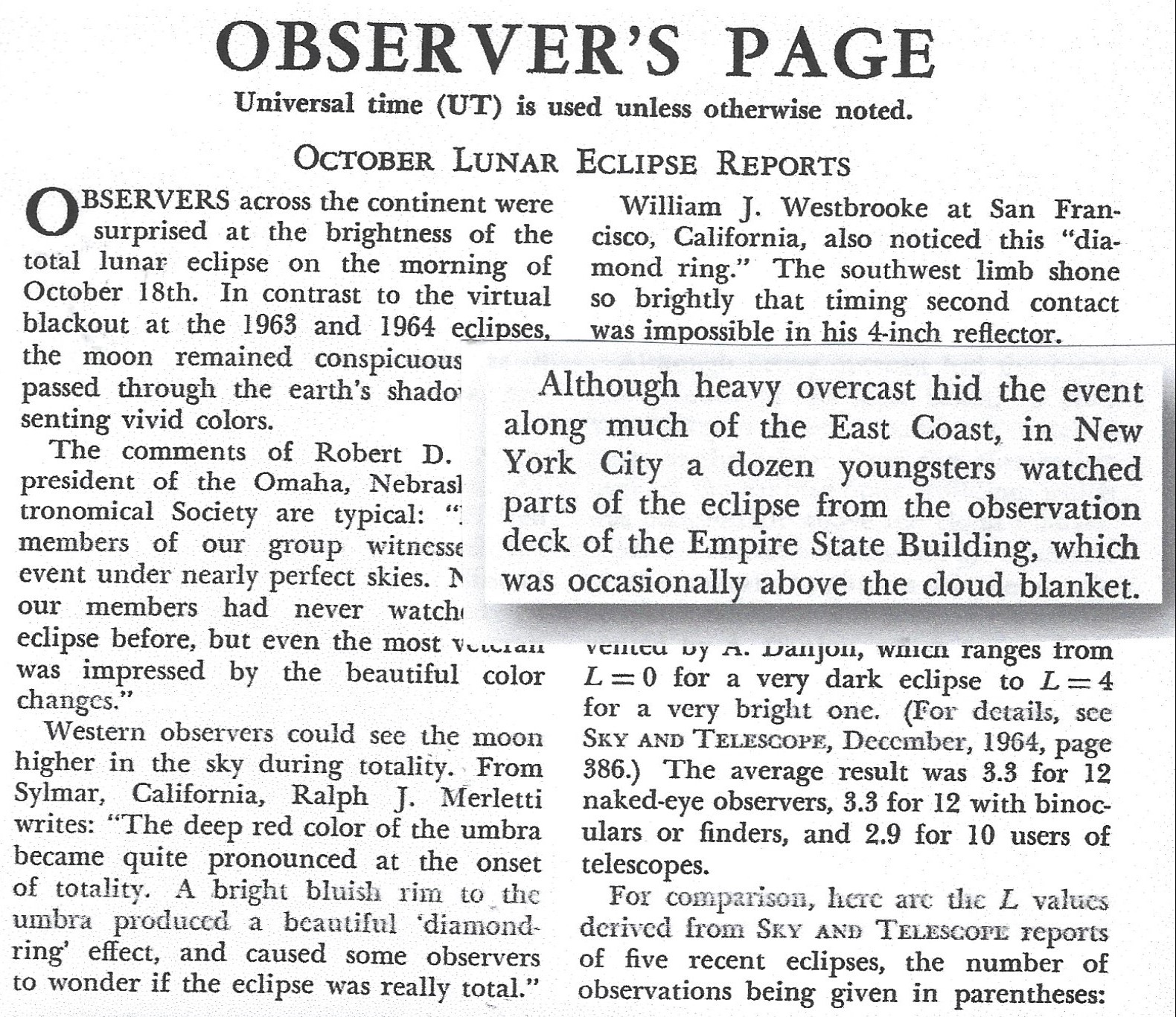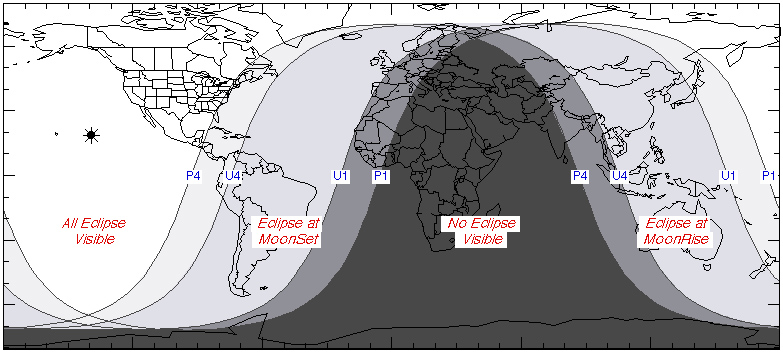How the Beaver Moon lunar eclipse of Nov. 19 has shades of 1967
Our upcoming lunar eclipse has a direct connection to an eclipse that occurred in the late 1960s.
Our upcoming lunar eclipse has a direct connection to an eclipse that occurred in the late 1960s. There is a reason for this that I will make clear in just a moment. But first, let's take a look back at that eclipse of more than half a century ago, when a bunch of young people "one-upped" adults in obtaining a view of their celestial quarry.
It was in the predawn hours of Oct. 18, 1967, that the full moon moved completely into the Earth's dark umbral shadow, resulting in a total lunar eclipse. The previous year, in cooperation with New York City's department of parks, the Hayden Planetarium invited the public to Sheep Meadow in Central Park at midnight, to observe the Leonid meteor shower. Although cloudy weather prevailed, some 10,000 persons assembled, listening attentively to a 45-minute talk on astronomy.
So, based on the strength of that event, a similar gathering was arranged to view the total eclipse from Sheep Meadow, beginning at 4 a.m. on the morning of Oct. 18. Members of the planetarium staff were to be on hand to answer questions. In addition, the Planetarium planned to take photographs from the top of the United Nations Secretariat Building and the U.S. Naval Observatory in Washington also planned observations as well. The first observable change would have been the dark umbra "biting" into the upper-left edge of the moon at 4:25 a.m. EDT.
Related: Beaver Moon lunar eclipse 2021: When, where and how to see it
Unfortunately, once again, the weather did not cooperate. About 11 p.m. low cloudiness settled in and soon made for a nearly solid overcast over much of the Northeast US. In addition, fog drifted in from off the water. The cloud ceiling at times extended as far down as 300 to 500 feet (90-150 meters). There was not the tiniest aperture through which the moon could wink at the small platform that had been set up in Central Park for the Hayden Planetarium astronomers.
None of them showed up anyway.
And instead of the thousands that showed up for the Leonid shower the previous year, just four skywatchers stood in a fruitless vigil scanning the thick quilt of low clouds for even a fleeting glimpse of the moon. The photographers stationed on the United Nations tower got none, and the U.S. Naval Observatory drew a blank as well.
Breaking space news, the latest updates on rocket launches, skywatching events and more!
Undaunted teens get a view
The unsettled weather, however, did not stop 10 boys and two girls, ranging in age from 13 to 17 years old — all amateur high school astronomers — from trooping into the lobby of the Empire State Building at 11:30 p.m., carrying cameras, binoculars, monoculars (hand telescopes), two six-inch telescopes, a radio for shortwave time signals and a guitar.
They were members of the Amateur Observers Society (AOS), an astronomy club founded in 1965 by 17-year-old, Ronald Abileah. And thanks to Daniel Howe Jr., a manager at the Empire State Building, a special arrangement was made to allow the AOS members to watch the eclipse from the building's 86th-floor observation deck, long after the building had closed its doors to members of the general public.
As the budding young astronomers set up their equipment, conditions were far from ideal: it was raw and wet on the deck, and the mists ran fast in a stiff wind. At times, the kids were enveloped in fog with a visibility of about five feet.
But at the 86th floor, the altitude above street level thrusts to 1,050 feet.
I was able to track down Eric Bram, who was one of the twelve young people who were fortunate to catch a view of the eclipse that foggy morning. In an exclusive interview via Facebook Messenger, he told Space.com:
"There was thick fog all around and we couldn't see a thing; not the eclipse or anything else. Then suddenly the fog dropped and we found ourselves standing on a little island, on the low terrace of a tower protruding above the clouds that stretched like an ocean to the horizon in all directions. Nothing else existed in the world: just the tower, the clouds, the stars, the eclipsed moon, and we who observed it."
Overhead there were patches of fast-moving clouds, and the moon kept teasing the young observers, with the wind dissipating the fog a bit. But it was enough to allow for snatches of the celestial display, with the initial penumbral phase visible a couple of times and then there was a brief view of what appeared to be a crescent moon, with only about one-quarter of the face lit up about a half-hour before the start of the total phase.
In the aftermath of the eclipse, there was a considerable amount of publicity about how the teenagers had managed to catch views of the eclipse while older and presumably more experienced observers did not.
The New York Times carried the story in their Oct. 19, 1967 edition under the headline: "The Young See Moon in Eclipse as Their Elders Fail to Show Up"
So how does this eclipse of decades past, bear any relation to our upcoming lunar eclipse?
Redux of 1967
It is an interesting phenomenon that an eclipse, whether of the sun or the moon, will repeat itself. Ancient astronomers in Assyria and Babylonia kept track of time by carefully observing the motions of the moon and the sun. By recording the details of solar and lunar eclipses, the accuracy of these measurements increased markedly. As they studied the record of centuries of eclipses, a pattern began to emerge: Eclipses tend to repeat themselves at intervals of just over 18 years, though they recur at different locations on Earth. This eclipse cycle is called the "saros" — Greek for "repetition."
A saros cycle encompasses 18 years and 10 1/3 days or 11 1/3 days, since almost always five or four leap years, respectively, intervene with almost equal frequency. Because of the extra third of a day, each successive eclipse occurs about 120 degrees in longitude to the west of its predecessor.
Thus, after three saros repetitions (54 years and 33 plus or minus 1 day) an eclipse recurs in the same general part of the world. The late science writer Isaac Asimov coined the phrase "triple saros" to describe this interval of time. However, astronomer Owen Gingerich notes that the Greeks called a period equal to three saros cycles an "Exeligmos," sometimes also referred to as "the turning of the wheel."
In this case, the 1967 lunar eclipse and our upcoming lunar eclipse are members of saros #126 and can be tied together using the Exeligmos:
Oct. 18, 1967 Mid-eclipse: 6:15 a.m. EDT
Nov. 19, 2021 Mid-eclipse: 4:02 a.m. EDT
And comparing the path that the moon took through Earth's shadow in October 1967 as well as the general region of the visibility of that eclipse, with the shadow path and visibility zone for our upcoming eclipse, we would readily notice the similarities:
The only significant difference over 54+ years is that the moon takes a track a bit farther to the south in 2021, so that the southernmost edge of the moon remains just outside of the umbra, making it an "almost total" eclipse compared to 1967.
So, a relative of the lunar eclipse that was witnessed by a coterie of young moon watchers in the fall of 1967 will be paying us a visit this week. Let's hope the weather will be a bit more cooperative for everybody this time around!
And incidentally, the then-fledgling Amateur Observers Society, which catered only to teenagers back in 1967, is still active today, though is no longer restricted just to high schoolers, but to astronomy buffs of all ages.
Joe Rao serves as an instructor and guest lecturer at New York's Hayden Planetarium. He writes about astronomy for Natural History magazine, the Farmers' Almanac and other publications. Follow us on Twitter @Spacedotcom and on Facebook.

Joe Rao is Space.com's skywatching columnist, as well as a veteran meteorologist and eclipse chaser who also serves as an instructor and guest lecturer at New York's Hayden Planetarium. He writes about astronomy for Natural History magazine, Sky & Telescope and other publications. Joe is an 8-time Emmy-nominated meteorologist who served the Putnam Valley region of New York for over 21 years. You can find him on Twitter and YouTube tracking lunar and solar eclipses, meteor showers and more. To find out Joe's latest project, visit him on Twitter.






